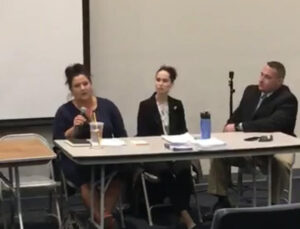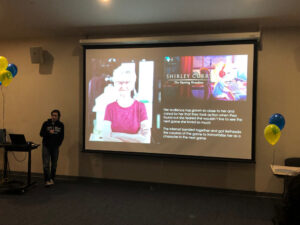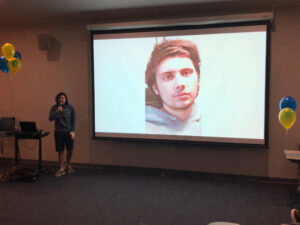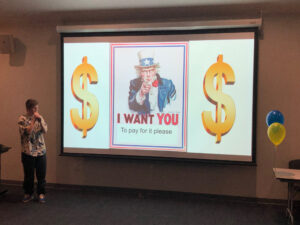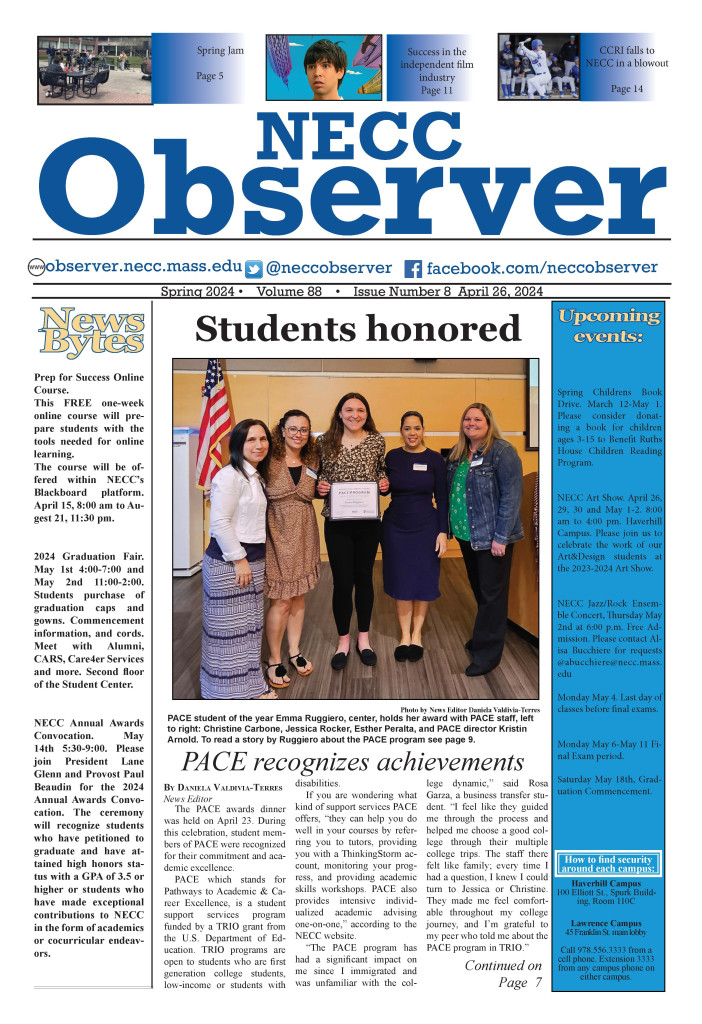New space opens on Haverhill campus
The student hub buzzed with excitement as students and faculty made their way into the space. The bright windows overhead cast down light as people found food and activities spread throughout the hub. An open house took place on the second floor of the Student Center on April 24 in Haverhill. The open house showed students and faculty how resourceful the hub is and the services it provides. Light upbeat music played in the background as people explored the space. The feeling in the air was filled with optimism and positivity.
Each study cube has its own computer and small door that slides if privacy is desired. These can serve as quiet study areas for students. Each study cube also offers a long desk space and a comfortable chair. Printers are connected to the computers and free printing is offered. In the middle of the hub, there is a common space. This space consists of comfortable chairs and couches arranged so conversation is encouraged. There is also a long table in the middle with chairs lined around it. There is food located in the back for students and faculty who need refueling. The food consists of a PB&J pop-up, bagels, frozen dinners, and a small food closet. A microwave and toaster are provided!
Karen Hruska, the Director of Counseling and Psychological Services, helped to create and promote the space. “The idea is that we wanted what we call a ‘One Stop Center We know a lot of the academic classes are in the Spurk building. But we can’t have everything in there. Because we have financial aid, admissions, the registrar, and advising here in the Student Center, the college decided to pull in some of the other student support services into this building so hopefully students don’t have to bounce around too much,” she said. Having all of these services close by will help students navigate the school better.
This new hub is unique in its own ways. One of the reasons the hub was created was because of student feedback. “Part of what I think makes the hub unique is that the focus is really on providing supports to students, but also offering something they wanted. Students told us that they wanted more spaces to study and lounge,” Hruska said. The hub creates a space where students can relax during their busy school days. This is especially important now during the last couple weeks of school. Finals week is quickly approaching and this hub will be very useful during that time. Faculty is also welcomed at the hub. “There are three faculty flex cubes. Part of it is that we know that faculty, especially adjunct faculty, sometimes don’t have enough space where they can both meet with students as well as prepare for their classes. So there are three spaces up here that are identified for faculty to utilize as well. They can meet with students in the space,” Hruska stated. These faculty flex cubes are also hooked up to separate faculty printers nearby.
Something else that this space can be utilized for is small events. “During the lunch time hours there can be different events and programs, such as yoga and coffee. It is a space that people could utilize as long as it is a relatively quiet kind of event during that lunch time hour,” Hruska said. Although it might not be the best for clubs or large groups to get together, the space is still great for study groups and a hang out spot.
There are many student services that outline the walls of the hub. One of them is the PACE program. This program is a student support service. About 250 students are currently in the program. Kristen Arnold, the PACE Director at NECC, said that the program helps students “persist in college, graduate with their associate’s degree, and move on to four year colleges.” PACE also helps students get scholarship money. Arnold said that one of the biggest benefits of having the hub is that it will make it “easy to refer students to other services because they are close by.”
Another service near the hub are the College Navigators. This service helps support new students. The navigators visit classes and host pop up workshops for students. They want to support students and point them in the right direction. They help students find the resources they need. Kirsten Kortz, the Director of the Office of Transitional Support for New Students, said the hub lets students have a “quiet but social study area.” And that this space has “been missing from the college. This space has a very different feel from the library,” she said.
Some other important services near the hub are The Career Center and Civic Engagement. The Career Center helps students explore different career paths and helps them land internships. It also helps students find jobs and change what their career is if they want to. Civic Engagement helps coordinate volunteer work and connects students with community resources. Ashley Moore, who works in The Career Center and Civic Engagement, as well as Janel D’Agata-Lynch, The Civic Engagement, Service-Learning and Community Resources Coordinator, attended the open house for the hub. D’Agata-Lynch said that she also helps students with food insecurities and “life stuff that comes in the way of school.” She said the hub makes services “more visible to students” and it gives students an “informal setting” to explore them.
“We care. We want students to succeed. It’s okay to ask for help!” D’Agata-Lynch stated.
“The hub brings people together. I had this in college and am excited to see this!” Moore said enthusiastically.
The hub gives students a place to study and interact. It also gives them a place to embrace the services that are open to them. These services include: Student Government, Student Life, The Veterans Center, The PACE Program, College Navigator, International Students, The Career Center, Counseling, and Civic Engagement. It is also right across from the bookstore. There will be a clothing closet put up over the summer in the hub. The space will also be open during the summer. The hub is open during business hours. Students and faculty are encouraged to check the new space out and utilize it to its full potential.

